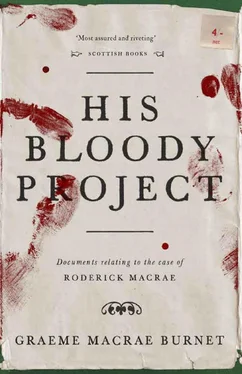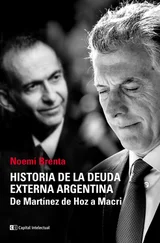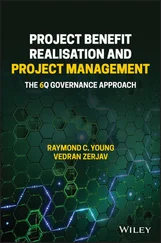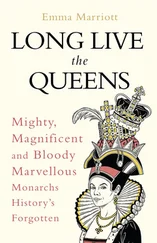Graeme Burnet - His Bloody Project
Здесь есть возможность читать онлайн «Graeme Burnet - His Bloody Project» весь текст электронной книги совершенно бесплатно (целиком полную версию без сокращений). В некоторых случаях можно слушать аудио, скачать через торрент в формате fb2 и присутствует краткое содержание. Год выпуска: 2015, Издательство: Contraband, Жанр: Современная проза, на английском языке. Описание произведения, (предисловие) а так же отзывы посетителей доступны на портале библиотеки ЛибКат.
- Название:His Bloody Project
- Автор:
- Издательство:Contraband
- Жанр:
- Год:2015
- ISBN:нет данных
- Рейтинг книги:5 / 5. Голосов: 1
-
Избранное:Добавить в избранное
- Отзывы:
-
Ваша оценка:
- 100
- 1
- 2
- 3
- 4
- 5
His Bloody Project: краткое содержание, описание и аннотация
Предлагаем к чтению аннотацию, описание, краткое содержание или предисловие (зависит от того, что написал сам автор книги «His Bloody Project»). Если вы не нашли необходимую информацию о книге — напишите в комментариях, мы постараемся отыскать её.
A brutal triple murder in a remote northwestern crofting community in 1869 leads to the arrest of a young man by the name of Roderick Macrae. There’s no question that Macrae is guilty, but the police and courts must uncover what drove him to murder the local village constable.
And who were the other two victims? Ultimately, Macrae’s fate hinges on one key question: is he insane?
His Bloody Project — читать онлайн бесплатно полную книгу (весь текст) целиком
Ниже представлен текст книги, разбитый по страницам. Система сохранения места последней прочитанной страницы, позволяет с удобством читать онлайн бесплатно книгу «His Bloody Project», без необходимости каждый раз заново искать на чём Вы остановились. Поставьте закладку, и сможете в любой момент перейти на страницу, на которой закончили чтение.
Интервал:
Закладка:
Mr Murdoch also wrote the same day to Lord Moncrieff and, although the letter has been lost, it is reasonable to assume that it expressed similar sentiments.
On receipt of Mr Sinclair’s appeal, the Lord Advocate would have been obliged to communicate with the trial judges and with the General Registrar for Scotland, William Pitt Dundas, but whatever the contents of their correspondence, events quickly took over.
John Murdoch had lodged Roddy’s manuscript with a local printer, Alexander Clarke. What appeared, however, was not a complete printing of the 50,000-word document, but a twenty-four-page chapbook comprising the most gruesome and sensational passages. Within days, scores of other, greatly bastardised, versions were printed up and down the country. The most notorious of these was entitled HIS BLOODY PROJECT: the RAVINGS of a MURDERER , printed by William Grieve of Glasgow. His Bloody Project ran to a mere sixteen pages and consisted of little more than Roddy’s description of the murders; his killing of Lachlan Mackenzie’s sheep (followed by the line, ‘It was at this moment I discovered my taste for cracking skulls, and resolved that I would not be long in indulging it again.’); together with a wholly fictional passage in which Roddy ‘wickedly defiled’ a twelve-year-old Flora Broad. The pamphlet sold tens of thousands of copies in a matter of days. Various gruesome cartoons, etchings and ballads (most notably On This Fine Morning, I Killed Three by Thomas Porter) followed, and rather than becoming a cause célèbre, Roddy became a national bogeyman. The irony that all these productions portrayed Roddy as being quite out of his mind must have been entirely lost on those who devoured them.
In all likelihood, Mr Sinclair’s scheme never had any chance of success. There were no legal failings to which he could point, nor could he reasonably argue that the conviction was unsafe in evidence. His hope that the publication of Roddy’s memoir would lead to a surge of popular support for his petition was, it must be said, hopelessly naïve. Nonetheless, there was no other course of action open to him and it speaks well of him that he supposed that the public would embrace Roddy as he had.
In any case, the following week, Mr Sinclair received a courteous, but perfunctory reply from Lord Moncrieff stating that ‘there being nothing amiss either in evidence or in the conduct of the trial’, he was under no obligation to consider an appeal for clemency. ‘Such talents that you claim for the accused, whether real or not, can play no part in the consideration of the Law.’ And, thus, the capital sentence was confirmed.
Mr Sinclair continued to visit Roddy on a daily basis. He found him in a general state of torpor, with ‘no appetite either for food or conversation’. At no point did Roddy bemoan his situation or express any fear about his approaching fate. Nor did he accept the ministrations of the prison chaplain, who entreated him to use the time left to him to reconcile himself to his creator. Despite having the necessary materials available to him, Roddy wrote nothing else, save the following brief letter to his father:
Dear Father,
I am writing in the hope that this letter will find your situation improved. I myself have but a brief time left and do not crave longer in this world than that which is allotted to me. The walls of my cell make for a dreary vista and though I would dearly love to see Culduie once more, if I could hasten my execution I would gladly do so. For the time being, however, I am quite comfortable and you must not concern yourself about my wellbeing, nor lament my passing.
I wish to say that I am sorry for the trouble I have caused, and that I earnestly wish you might have been blessed with a more worthy son.
[Signed]
Roderick John Macrae
The letter was delivered to Culduie on the afternoon of the 22nd of September, but John Macrae never read it, having been found that morning dead in his chair by Carmina Smoke. He was interred next to his wife in the burial ground at Camusterrach. The house and its outbuildings were allowed to fall into a state of disrepair and the land was distributed among the remaining residents of the village. The role of constable was assumed by Peter Mackenzie.
On the 24th of September, the morning of his execution, Roddy’s only request was that he might take a turn around the prison yard. This was allowed to him, and, according to Mr Sinclair, he completed his circuits ‘quite as if he was entirely elsewhere’. He was then accompanied from his cell by his advocate, a minister of the Church of Scotland and two gaolers. As the party approached the chamber where the execution was to take place, Roddy’s legs gave way beneath him and he had to be dragged the remaining yards by the warders. All necessary preparations had been made and, aside from the hangman, Dr Hector Munro and the Prison Governor were also present. As the hood was pulled over his head, tears streamed from Roddy’s eyes. Mr Sinclair hid his face in his hands. Roderick Macrae was pronounced dead at twenty-four minutes past eight o’clock. ‘The hanging,’ stated the doctor’s report, ‘was conducted in an exemplary fashion, and no undue suffering was caused to the prisoner.’
Acknowledgements
In terms of research and inspiration, I owe my greatest debt to five volumes: Highland Folk Ways (Routledge, 1961) by I.F. Grant, an entirely indispensible guide to the way of life and traditions of the Scottish Highlands; The Making of the Crofting Community (John Donald, 1976) by James Hunter, which is the best book on the historical development of the Highlands I have come across; Children of the Black House (Birlinn, 2003) by Calum Ferguson, which offers a more anecdotal history; The Origins of Criminology: A Reader (Routledge, 2009) by Nicola Rafter, which introduced me to the writings of J. Bruce Thomson and other pioneers in this field; and finally I, Pierre Rivière, having slaughtered my mother, my sister and my brother (Bison Books, 1982), edited by Michel Foucault.
I am also grateful to Applecross historian Iain MacLennan, both for the wealth of information contained in his book, Applecross and Its Hinterland: A Historical Miscellany (Applecross Historical Society, 2010) and for his generous responses to my emails. Gordon Cameron, curator of the Applecross Heritage Centre, has been similarly generous with his time and provided me with the text of the song ‘Coille Mhùiridh’, composed in the 1820s by Donald MacRae. The English translation is, I believe, by Roy Wentworth. The translation of ‘Càrn nan Uaighean’ was suggested to me by Francis and Kevin MacNeil.
I should also note a debt to the Sermons of Reverend Angus Galbraith (1837–1909), which inspired the funeral oration of his namesake in this book. James Galbraith’s ‘police statement’ also paraphrases the words of the Reverend John Mackenzie of the Parish of Lochcarron, who wrote in his ‘Statistical Account’ of 1840: ‘Not farther back than the middle of the last century, the inhabitants of this district were involved in the most dissolute barbarity. The records of presbytery, which commence in 1724, are stained with an account of black and bloody crimes, exhibiting a picture of wildness, ferocity and gross indulgence, consistent only with a state of savagism.’
James Bruce Thomson (1810–1873) was a real person and the articles mentioned in the text can be found online. The theories propounded by Mr Thomson in the novel are closely based on these articles, but his personality and character are the products of my imagination, as is his memoir. The character of John Murdoch is likewise loosely based on the radical reformer (1818–1903) of that name.
Читать дальшеИнтервал:
Закладка:
Похожие книги на «His Bloody Project»
Представляем Вашему вниманию похожие книги на «His Bloody Project» списком для выбора. Мы отобрали схожую по названию и смыслу литературу в надежде предоставить читателям больше вариантов отыскать новые, интересные, ещё непрочитанные произведения.
Обсуждение, отзывы о книге «His Bloody Project» и просто собственные мнения читателей. Оставьте ваши комментарии, напишите, что Вы думаете о произведении, его смысле или главных героях. Укажите что конкретно понравилось, а что нет, и почему Вы так считаете.












